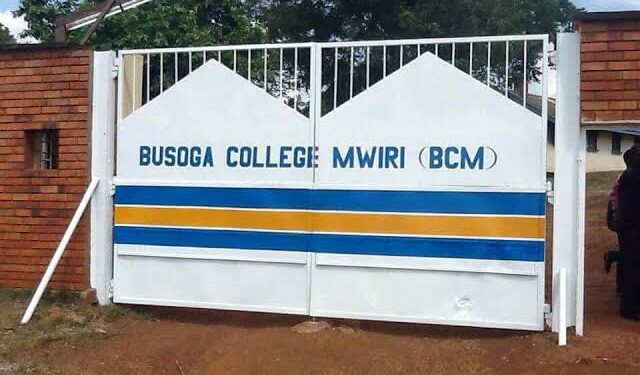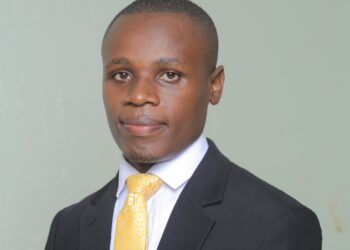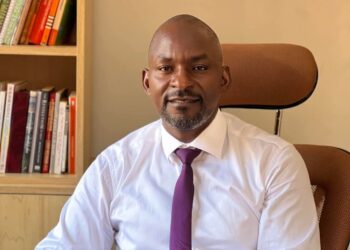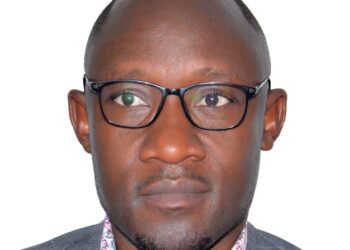On the morning of 3 November,2022 I received a telephone call from an unexpected source. It was from Emmanuel Ssenkwale, an OB of Busoga College, Mwiri. He is a cross breed between a Musoga woman from Mayuge and a Muhororo man from Kigezi. As our conversation progressed, it emerged that although he was much younger, we shared many similarities. I promised him that I would write an article on Mwiri in which I would mention him.
I was happy when he told me on what he was not agreeing with me in my article of 1st November 2022 “Busoga: What went wrong and how can we right it?” He was not initially happy with my submission on Dual Citizenship. But when I told him that I carefully used the phrase “absolute majority of Ugandans” to stress that only a few of the 45 million Ugandans would benefit from it and that it was amenable to abuse by foreigners, he became less perturbed.
Ssenkwale is from the Busoga College Mwiri’s O-Level class of 1993 and 1996. He decided to do his A-level at St Mary’s College, Kisubi, which gave him an opportunity to compare the two ancient schools. He told me that at Mwiri he was in Hannington House of which I was the Head from 1970 to 1971. He found that in Mwiri students of all ages and levels of education mixed freely, shared dormitories and even food in the school cafeteria, with students from different levels sitting side by side at the same tables without discrimination. The bigger ones would ensure that the young ones got edibles before they did. However, at Kisubi students at different levels never mixed. If you were in Senior One you only mixed with Senior ones. Senior Sixes were in the skies, unreachable by O-level students, which was not the case in Mwiri. He told me that on his first day in Kisubi, the Headmaster told students that they would only interact with colleagues at same levels, not others.
Like myself Ssenkwale is a product of parents who belong to different religions.
While my mother (RIP) was a Catholic and my father (RIP) was a Protestant, his mother who is still alive is a Protestant and his father (RIP) was a Catholic. In both cases the parents never struggled to recruit the children in either of the religions. Emmanuel and myself enjoyed total freedom of choice of religion. For me I chose to study in Anglican schools and Emmanuel chose Catholicism at lower levels of education but for A-level he attended an Anglican School. Freedom of choice is critical to democratic development. I value it very much. Emmanuel told me he too values it. Without freedom of choice, one is incomplete as a human being and manifests as a subhuman.
At Mwiri one was free to choose which Club or society to belong to. One had even to choose if one wanted to be punished or not. There was no caning. If one had an indiscipline case, the punishment was simple: sitting down doing nothing; not even twisting oneself while doing the sitting doing nothing punishment would be allowed.
Depending on how severe one’s disciplinary case was, one could sit doing nothing for 1, 2, 3 or 4 hours. A prefect would sit in front of one reading his books while monitoring the activities of the culprit.
Many students hated the sitting doing nothing punishment and struggled to ensure they never fell prey to the punishment. So, in Mwiri discipline was ensured without corporal punishment. This could explain why many Mwirians would not support hanging as a solution to murders and assassinations, or as a reform measure because the punished would no longer be conscious of anything. Even the worst people can reform if given a chance. Our sitting doing nothing punishment reformed many students. Many of them became very useful people in life, country and beyond.
A little history of Mwiri in relation to other schools established by missionaries early in the 20th Century will place the school in context in the development of education in Uganda.
On the request of the chiefs in Busoga, the CMS Missionaries first established Kamuli Balangira High School and Iganga High School in Busoga, nearly at the same time on 25 September 1911, as Balangira High School, to educate the sons of Busoga Chiefs. Initially, the school was housed in Kamuli. On May 12 1932, the school permanently relocated to its present site at Mwiri Hill. The relocation to Mwiri Hill was because the site was more spacious, environmentally-endowed physically and climate-wise and, therefore, better suited for academic work.
When I joined the school in 1966, the road to Mwiri was just as dusty as it was on May 12 1932, the date when it moved to the Hill. The hill was still well-forested by indigenous vegetation. And the talk of a leopard and python in the forest was still as rife as before. The temperatures at the Hill were always low and cold weather tortured us almost throughout the year. To bathe early in the morning, we would first expose our bodies to the cold weather and then shower. The water would be somewhat warm.
I left Mwiri in 1971 on completion of A-Level Studies in Biology, Chemistry and Geography and proceeded to the University of Dar-es-Salaam 1972, under the East Africa Inter-University Exchange Programme, to study Zoology, Botany, Geography with Development Studies. A number of people from Mwiri also joined the University of Dar-es-Salaam. They included Paul Gwaira, Fred Mufumba, John Baslirwa, Chemisto, and Olwitingol. It is not true that one went to Nairobi University or University of Dar-es-Salaam only if failed to enter Makerere University. We were admitted to Makerere University first and then exchanged for other University. Nairobi University and University would fist admit their students with Makerere University. In 1972, 120 Ugandan students joined the University of Dar-es-Salaam. Most likely, an equivalent number Tanzanian students joined Makerere University.
The same CMS Missionaries who established Kamuli that became Mwiri had established Duhaga High School in 1911 at Hoima. This school was, however, transferred to Masindi as Kabalega High School before 1920. The CMS Missionaries had also established Mbarara High School in 1905 and Nabumali High School around the same time. Ngora High School and Kabarole High School were founded between 1900 and 1911. On the request of Sir Apollo Kaggwa, 5the Katikiiro of Buganda, the CMS Missionaries established Mengo High School much earlier than Kamuli High and Iganga High and other schools much earlier in 1903. Gayaza High School and Kings College Budo were established by the CMS Missionaries in 1905 and 1906 respectively. Like in Busoga the schools were for the daughters and sons of Chiefs and of the most important Protestant families in Uganda at the time. Meanwhile the Catholic Missionaries of Africa established Namilyango College in 1903 and St Mary’s College Kisubi in 1906.
Busoga College, Mwiri like Makerere University College started as more of a technical than academic school.
Ultimately, however, it grew and developed to be an academic giant in the whole country. It exchanged students with other academic giants such as Nabumali, Buddo, Kigezi College, Butobere, Namilyango, Nyakasura, etc, which contributed a lot to sustaining its visibility and academic excellence as well as its emerging as a nationalistic school.
Academic excellence assumed a consistently an upward trend under the 35 year long reign of Rev. John Coates. In 1970 65 out of the 70 students that sat their A-Level Examinations joined university for different programmes of training. At one time in the difficult period of sociopolitical instability in the 1980s, 80 0ut 0f the 85 students who sat A-Level Examinations joined University. Between 1990 and 200 the school’s performance was so excellent that in 14 out of 15 students scored straight As in Mathematics and 88.7% passed at O-Level. However, from 2001 the school’s academic performance fell meteorically as that of Kiira College, Butiiki rose supersonically, something which was unthinkable in the past. It has taken the concerted effort of the Old Boys (OBs) of the State run school to struggle to have the academic standards of the school, which gave the country its National Anthem, rise again. The Clarion Call is that “Mwiri Shall Rise and Shine Again”.
Not long ago, however, some overenthusiastic OBs almost succeeded in implementing a very unwise decision of replacing Busoga College, Mwiri at the Mwiri Hill with a University – Busoga University, Mwiri University – or whatever name would ultimately be settled for. I was personally extremely happy when the voice of “Let Mwiri remain” triumphed over those which wanted a university instead of Busoga College, Mwiri. The Movement for University was caught in the maze of universities, which was sweeping the country, as if all education should be university education.
The plot for university was a plot against the poor and needy who struggled all along to have their children admitted at Mwiri. For example, my father (Charles Afunaduula Ovuma), my uncles (Silas Wekiya, Martin Namansa and Michael Kyangwa), my cousin bother (Paul Gwaira) and my brothers Julius Namansa, Robert Namubona and Ntama-Matindo and myself are all Mwirians. Many of the children of my brothers have gone through Mwiri, However, our genealogy is a humble one. I wanted to have one of my children in Busoga College, Mwiri but he joined A-Level at a time when the school was beginning to decline. I opted for Kiira College, Butiiki which was then the academic giant of Busoga. One thing is true. Behind every problem is the problem of leadership. Once the issue of leadership is ironed out Mwiri will rise again and rediscover its former academic glory.
Right from the beginning, Busoga College, Mwiri also admitted children of the very poor and very needy who were good academically. The bursary system which existed in Busoga then helped many children to advance their education. Besides, parents were gainfully engaged in agriculture and cooperatives, and could raise fees up to a certain level. The school also very early began to admit Catholics and Muslims, indicating the culture of religious tolerance even if the headmasters and teachers were Protestants. When I was at the school there were churches for Catholics and Protestants and a special place where Muslims could pray. There was no reason why students had to seek prayers outside the school. Time was precious.
In Mwiri, there was a well-developed mentoring system. By the time one checked out of the school, one was not drastically different from the others in certain qualities, such as capacity to think critically, analyse issues critically, or question if not in agreement with the ideas of others. In games, the young and old played together. There were Clubs such as the Debating Society, Social and Cultural Society and Dramatic Society, which greatly enhanced interaction within the school. This could explain why Mwirians tended to interact easily with others and to become leaders. One time, long after Old Mwirians Apollo Milton Obote was ousted from power a second time, Parliament and Cabinet were dominated by Mwirians.
Bullying new comers was abolished by Headmaster Rev. John Coates in the 1940s. And the reason was Apollo Milton Obote. When he joined the school, he learnt that he was going to be bullied at night by some older students in the school in advanced years. During that time there was only Junior Secondary and O-Level education at Mwiri. During the day he shaped a piece of wood to look like a knife. At night when some big boys came to Obote’s dormitory to bully him, he was ready for them. He drew his “wooden’ knife. The boys run for their lives. Next morning, they knife-scared boys reported Obote to the Headmaster who summoned him to his office and told him to bring the knife to him. Obote went for the wooden knife. When the Headmaster saw it he laughed his head off. During the next general assembly, he banned bullying in Busoga College, Mwiri.
There was no discrimination according to tribe or ethnicity in Mwiri. Equality was the rule rather than the exception.
Conflicts on basis of tribe or ethnicity were extremely rare. Refugees from Rwanda and Sudan fit in very well as did Indians, Kenyans and Tanzanians. I studied with a Nigerian from Mwiri Primary school (1964-65) to Busoga College, Mwiri (1966-1971) whose names I remember very well as Ikechukwu Nwokedi. This could be one reason why Busoga College Mwiri products tended to be more nationalistic, rationalistic and pan-Africanist than those from the other schools. No wonder the Motto of the School was For God and Our Country, which was only slightly modified to get Uganda’s national Motto “For God and My Country”. Most likely without Busoga College, Mwiri Uganda would be having another national Motto.
Which way Busoga College, Mwiri? The school authorities and Old Boys should not only worry about the past academic glory of Busoga College, Mwiri. It is good the school has preserved its glory in the sport of cricket. The challenge is to reinstate the collective uniqueness of the school so that it is not just like any other school. Despite the overwhelming poverty sweeping the country in Movement times like a hurricane, Busoga College, Mwiri should continue to encourage mixing of students ethnically and in terms of income backgrounds of their families. Mixing of students across educational levels and ethnic lines gave Busoga College, Mwiri its uniqueness as a national school. Its admission of students from other countries gave it the pan-Africanist stance. Pan Africanism should be built not by destroying nationalism but by using nationalism as a foundation for pan-Africanism. Before the while man came to Uganda, there were 15 nations, which made up Uganda at independence’s nationalisms of these nations should not be destroyed by those overzealous about pan-Africanism.
Mwiri, if it can recover its nationalist stance can, like in the past, continue to be a springboard for meaningful pan Africanism, which does not crush nationalism to prop up interests of an exclusive group of people, perhaps ethnically- related.
There is need to reestablish the former physical environment of Busoga College, Mwiri by reintroducing indigenous trees on the scarps of Mwiri Hill. The soil of the hill contains seeds of the trees and shrubs that were destroyed. It also contains seed that have been buried in the soil for over 2000 years. Instead of planting the foreign Cypress and Eucalyptus, the school can initiate a project to recover the lost trees by collecting soil from the hill, putting it in pots, watering in the morning at 6 am and in the evening at 6 pm, and watching to see which plants emerge. The soil must be excavated from the soil profile, and from each profile up to 6 feet deep. The soil from each soil profile can then be put in different pots. There can be as many pots as possible for each soil profile. Seeds have survived underground up to 6 feet deep. The principle is that seeds buried in the soil can be recovered, allowed to germinate and then be translocated to the Mwiri scarp.
Last but not least the school should reintroduce the debating society, dramatic society and social and cultural society. These were important in ensuring that Mwiri people were part of the active society on all continents. They are the ones you need to ensure that Mwiri continues to dominate the civic space in terms of leadership and as change agents. Life is about two things: influence and change. Mwiri must be at the forefront of influencing and change. Mwirians despised and continue to despise “No Change” as a trademark.
Busoga College, Mwiri can recover its all-round uniqueness for influence and change in Busoga, Uganda, East Africa, Great lakes region, Nile Basin, Africa and the world. Yes it can..
For God and My Country
Do you have a story in your community or an opinion to share with us: Email us at editorial@watchdoguganda.com











